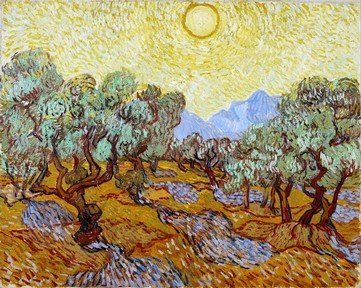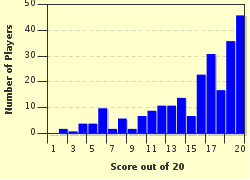Quiz Answer Key and Fun Facts
1. Are there any sheep depicted in Caravaggio's "Adoration of the Shepherds" (a painting completed in 1609)?
2. The "Corpus Hypercubus Crucifixion" is one of the oddest crucifixion scenes ever made. Which Spanish surrealist depicted Christ crucified on a cross made out of *THREE* axes, each consisting of three or four cubes?
3. Leonardo da Vinci left us only very few completed paintings. One of these paintings can be admired in the convent of Santa Maria delle Grazie in Milan, Italy. What is the title of this masterpiece, with thirteen characters on display? Please give your answer in English.
4. In Duccio's "Agony in the Garden", you'll find Christ praying just before He was captured. What is the name of the garden in which Christ was taken captive?
5. In one of his woodcuts, Albrecht Dürer shows us the death of St. John the Baptist. How did St. John the Baptist die?
6. Many artists have painted the "Visitation". To illustrate this question, I'll refer to the painting completed by El Greco in 1613. In this painting, you'll see two women dressed in greyish blue. Who are these women, who were both pregnant when one visited the other?
7. The "Annunciation" was a very popular theme in Renaissance art. Which of the following artists completed a mosaic on this theme in 1490?
8. Giotto di Bondone depicted the first miracle performed by Jesus Christ. This fresco is one of the different scenes in the Scrovegni Chapel in Padua, Italy. You'll see Christ and nine other persons at a meal. Where does this event take place?
9. Benozzo Gozzoli introduced, in his painting "Procession of the Young King", members of the leading family in Florence. What is the family name of the person shown as "The Young King"?
10. Guercino completed a picture of someone touching Christ's wounds. Who was this original apostle?
11. An iconic painting entitled "Lamentation over the Dead Christ" was finished in 1490. This unique composition shows us the dead Christ, lying on a bier, seen in frog's perspective from the feet upwards. The presence of two weeping women to the left does not contribute as much to the general feeling of discomfort as the livid colour and especially the startling perspective. Who painted this picture?
12. Did Michelangelo complete all of his Pieta sculptures?
13. Andrea Pisano made a panel in gilt bronze representing the "Baptism of Christ". In which river was Christ baptised?
14. Rosso Fiorentino made a painting of an event that gave its name to a South-American capital city. What was this event, also the title of this painting?
15. For which of the following paintings did Peter Paul Rubens make a study of an African's head?
16. Tintoretto made in 1545 a painting in which many men and horses swarm criss-cross all over the place. To find out exactly to which New Testament event the painter refers, there are two important clues. In the upper left corner an angel makes way in the clouds for a beam of light. And at the end of this light beam, you see a man dressed up as a soldier falling of his horse, apparently blinded by this light. Who is the man who falls off his horse?
17. A painting completed by Titian around 1530 shows us Jesus Christ blessing the bread. At that specific moment, two disciples recognised Him. What is the title of this painting?
18. One of the little paintings on the predella of the Roverella Polyptich by Cosme Tura shows us Joseph, Mary and Jesus fleeing to Egypt. From which political leader did they flee?
19. In a very dark painting by Valentin de Boulogne, an apostle returns tribute money to Caesar. According to various gospels, he did "render unto Caesar what is Caesar's". (See Matthew 22:15-22; Mark 12:13-17 and Luke 20:20-26 in the King James Version). Who used this phrase in these gospels?
20. The "Last Judgment" refers to the Book of Revelation, in which John (probably the apostle John) has a vision of the end of times. Numerous Renaissance artists have depicted the final scene: the righteous people will ascend to heaven, and the sinners are condemned to hell. A famous Dutch painter gives very vivid rendering of these events to come. He shows us a bunch of nude people tormented by monsters and a few good people sitting besides Jesus Christ. The Dutch painter we're looking for has left us many paintings which show us nude people, sinners and tormenting monsters. I'll just name you a few of them: "The Seven Deadly Sins" and the "Haywain" triptych. Who was this artist?
Source: Author
JanIQ
This quiz was reviewed by FunTrivia editor
CellarDoor before going online.
Any errors found in FunTrivia content are routinely corrected through our feedback system.

